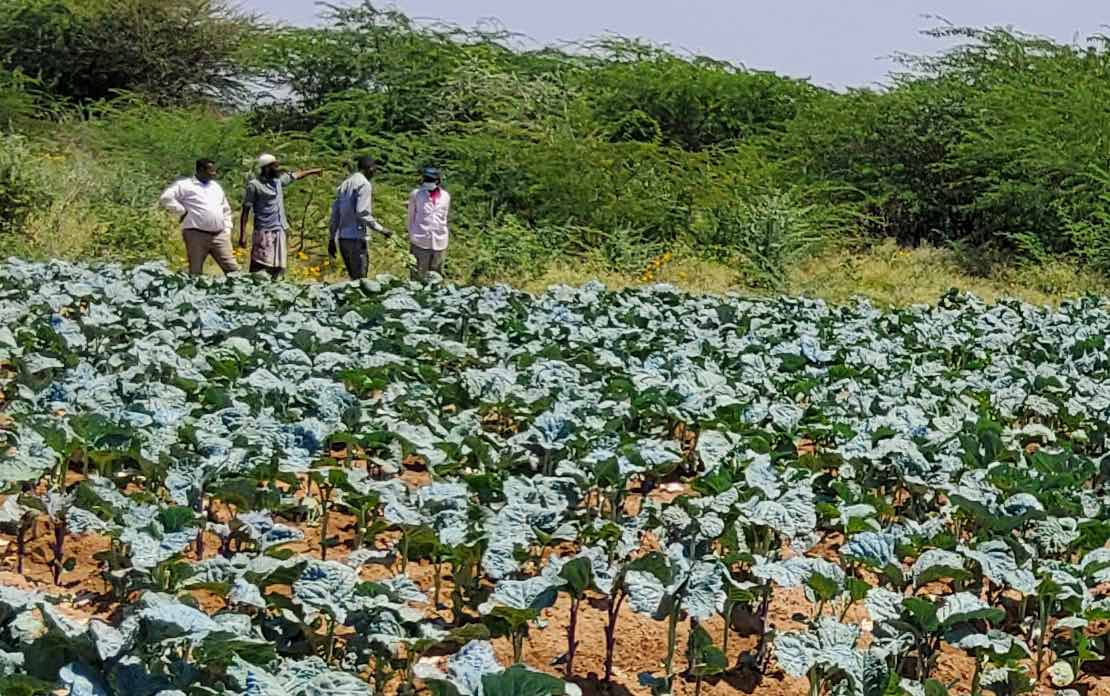Lake Beseka is a shallow saline lake in the East African Rift Valley of Ethiopia. It has no natural outflows, and has expanded dramatically in size since the 1960s due to factors including groundwater discharge, inflow from hot springs, and excess irrigation water joining the lake through subsurface flows. Figure 1 shows the expansion of the lake from 1986-2012.
Figure 1: Map of Lake Beseka Study Area
Managing the lake’s continuing expansion is a significant challenge for surrounding communities and various stakeholder groups. For example, to slow the expansion, a two-tunnel system was built to release excess water from the lake into the Awash River. This saved the nearby upstream town of Metehara from being submerged; however, sulfuric and saline water from the lake have also affected the river’s water quality, impacting farmers and agro-pastoralists downstream by aggravating soil salinity and reducing farm yields. Currently, the lake water that is being discharged into the river cannot be regulated as the control gates of the two-tunnel system are broken.
Addressing these challenges requires considering the complex interconnectedness of the Awash Basin, and the lake, its users, and its history. Yet thus far, little research has addressed the governance and institutional factors that are so integral to understanding the problem and improving lake management. The relationships and dynamics between upstream and downstream users, main stakeholders and plantations that utilize the lake water must be better understood if sustainable long-lasting solutions are to be developed for Lake Beseka.
A recent study led by IFPRI (Mekonnen et al. 2022) used key informant interviews (KIIs) and social network analysis (SNA) to understand these relationships and propose solutions to this complex water governance issue.
Key informant interviews
Hydrological factors
KII respondents noted that water problems during the past 10 years had been exacerbated by the Fentale-Boset irrigation project, completed in 2009 to divert water from the Awash River to serve six agro-pastoral areas in the Fentale district. The project increased the underground interconnectedness of the Awash River and Beseka Lake systems. That decreased the lake’s salinity, which allowed some farmers to begin growing crops using lake water. However, the project also fed the lake’s expansion, submerging residential houses and businesses on the outskirts of Metehara.
Institutional and organizational factors
An efficient regulatory environment was identified as the most important factor in the allocation of water. Respondents suggested introducing new strategies through the Awash Basin Authority to use modern irrigation technologies and reduce inefficient water use practices. To address the soil salinity problem, KIIs suggest creating a dedicated platform which will provide training on water management and a space for stakeholders to exchange information in person on best practices and technologies. However, the latest irrigation technologies remain out of reach for many famers due to the affordability, availability, and complexity of technologies.
Impacts of the lake’s expansion on livelihood resources
Flooding, water quality, water security, and health effects were identified as the four main hydrological challenges faced by stakeholders. The intensity of these challenges varies across upstream and downstream areas and sectors. Flooding was seen as the most important challenge, as it submerges farmland and property and increases the sodium and salt concentration in the soil, damaging livelihoods.
Social network analysis
The structure of Lake Beseka’s governance network
The SNA revealed that ties between upstream and downstream stakeholders are mediated through a few central government actors. Collaborative ties exist in the government sector while ties between actors on a local level are characterized by conflict. The clusters of relationships are formed around local boundaries, indicating that geographic locations matter in building networks. There are fewer cooperative ties downstream than there are upstream, indicating that downstream water quality stresses reduce the potential for cooperative linkages among that area’s stakeholders.
Federal level interactions in the multilevel governance
The Awash Basin Authority and the Metehara Sugar Factory were identified as the most influential actors affecting water governance, while the two local community-based organizations (CBOs), private enterprises, and NGOs have little to no influence. Farms, the Metehara City Municipality and Woreda Offices are all moderately influential.
Recommendations
This study improves the understanding of the governance and institutional relationships between stakeholders and makes three recommendations for future solutions:
Recognizing existing informal networks of stakeholders
Small-scale farmers and semi-pastoralist communities are excluded from the Awash Basin Authority, which controls the Water User Association (WUA). As informal water users are not included in the WUAs, they do not have to abide by any water allocation decisions of formal institutions, which leave formal actors with less incentive to abide by the formal system’s rules. This may further degrade relationships between stakeholders.
Building on existing relations of stakeholders
It is crucial to consider existing cooperative and conflicting relationships with all actors involved. Government agencies have the power to mediate relationships between local actors, while universities could integrate science, policy, and implementation across all levels. NGOs and donors can mobilize communities and finance activities of federal and local stakeholders.
Changing the status quo
It is clear that existing approaches to managing the expansion of Lake Beseka and water use in the area are not sustainable. Alternative solutions that emerged from the study included wetland development outside of the Awash National Park, dam building, and desalinization of Lake Beseka water. On a farmer level, KIIs suggest introducing salt tolerant crops, water efficient irrigation technologies and better land tenure security.
If a sustainable solution to the problem is to be developed, all stakeholders must be centered in the process. More research is also needed to assess the potential tradeoffs of alternative proposed solutions to minimize unintended consequences of the solutions on downstream communities and other under-represented stakeholders (Mekonnen et al. 2022).
Upeksha Hettiarachchi is a Research Analyst with IFPRI’s Environment and Production Technologies Division. This post is based on research that is not yet peer-reviewed.
This work was funded by the University of Oxford (REACH Programme) with support from UK Aid.







